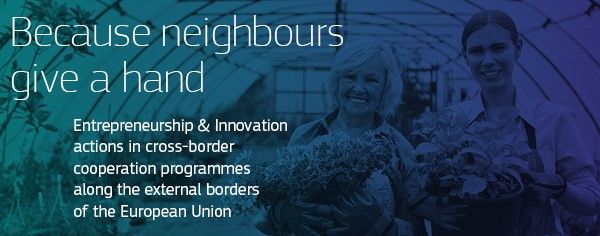The creation of economic opportunities: the challenge faced by 318 projects
Do you want to know how a business-oriented approach is fostered throughout the ENI CBC projects? Which programmes are working for skill development and mentoring of entrepreneurs? How is innovation applied to industries and enterprises, and what difference does it make to use digital services? To all this and a lot more you can find an answer in a new thematic publication just released by TESIM, exploring entrepreneurship and innovation actions along the external borders of the European Union.
The creation of economic opportunities across the European borders is one of the biggest challenges faced by cross-border cooperation, where a galaxy of small and very small enterprises needs a favourable ecosystem to stimulate sustainable growth and job creation, and to adapt to the ever-changing needs of the market. Projects seek to foster business and to help people improve their skills, with benefits for all communities on both sides of the European border.
Looking at the whole of ENI CBC interventions, the economic development cluster represents the biggest share of all the actions being currently implemented, with 34% of the projects (they are 318) and 29% of the entire available budget. The average size of economic development projects is around 960.000 €, higher than the average budget for P2P, but lower than projects under environment or cross-border infrastructures. The E&I projects are currently involving more than 1.150 organisations from 27 countries.
In this publication we describe the economic development cluster in terms of Entrepreneurship and Innovation (E&I). The two concepts are closely related: entrepreneurship as conceived by the ENI CBC programmes aims to foster a “one-step-forward” mindset, it tends to educate young people, to include groups at risk of economic exclusion, to ease administrative requirements and to make it easier to attract investors. Innovation is not limited to the technological or digital field, it grows as a transversal concept, embracing people and processes, not just “material objects”. Together, E&I expand through different economic sectors existing in the wide variety of territories covered by the ENI CBC project, from fishery to agroforestry, from tourism to creative industries. They focus both on the human factor as well as on the market potential: because developing business opportunities or creating support services is not enough, it must be matched by a cultural change, the affirmation of a mindset involving self-confidence and promoting the “entrepreneurial” spirit in territories where the myth for a permanent job has traditionally dominated.
In this publication we analyse the wide range of topics covered by E&I, and we present some flagship projects with the aim of highlighting the impact of E&I actions along the external borders of the European Union.
Leaving no one behind in the joint endeavour to overcome the pandemic, is the common challenge stretching from today’s ongoing projects to the NEXT programming cycle. From research to digitalisation, from support to SMEs to tourism enhancement, there are many elements of continuity between ENI and NEXT. A traced path for territories and communities already accustomed to travel together. Because neighbours give a hand.
Find it in our Library: https://interregtesimnext.eu/library/

